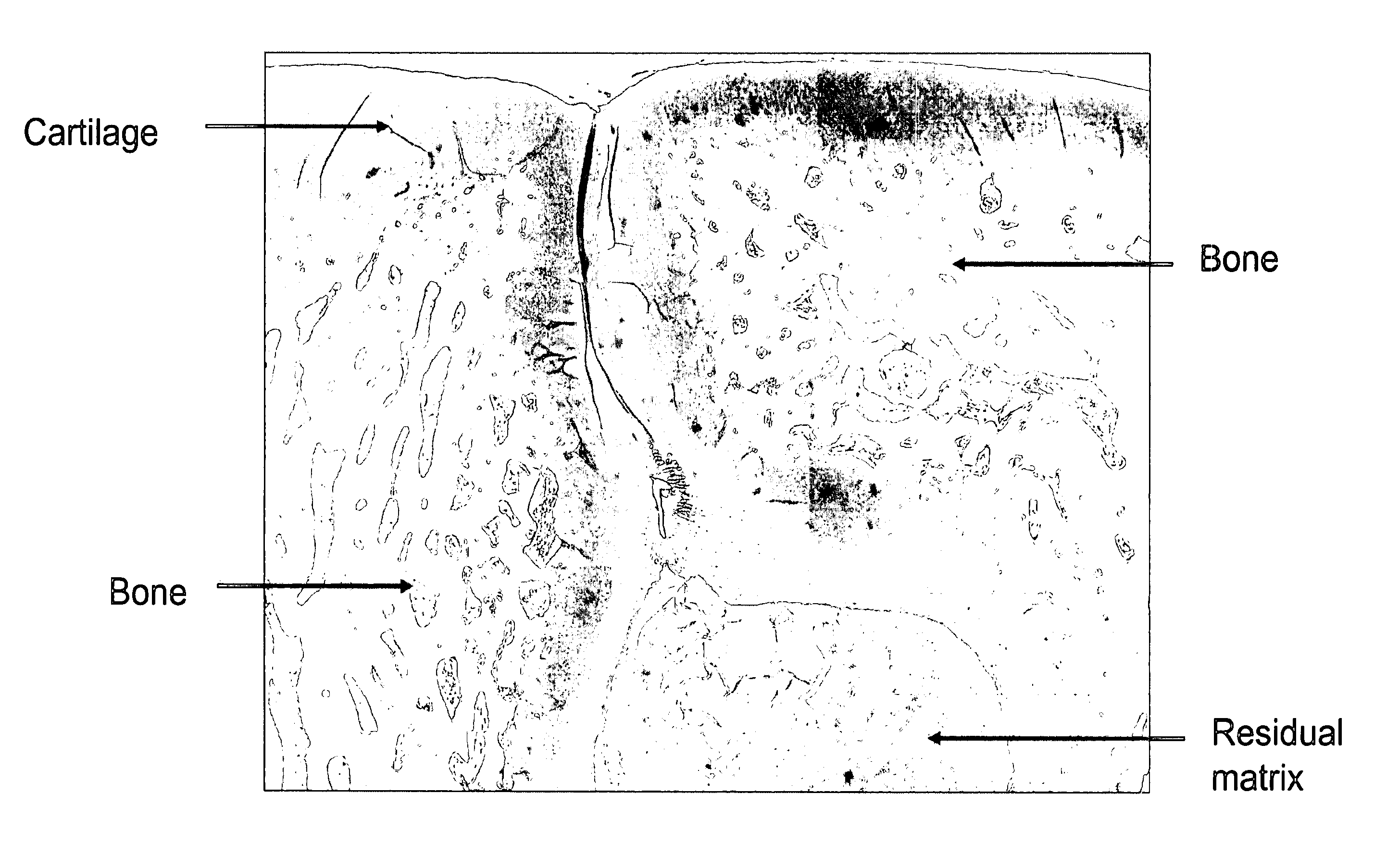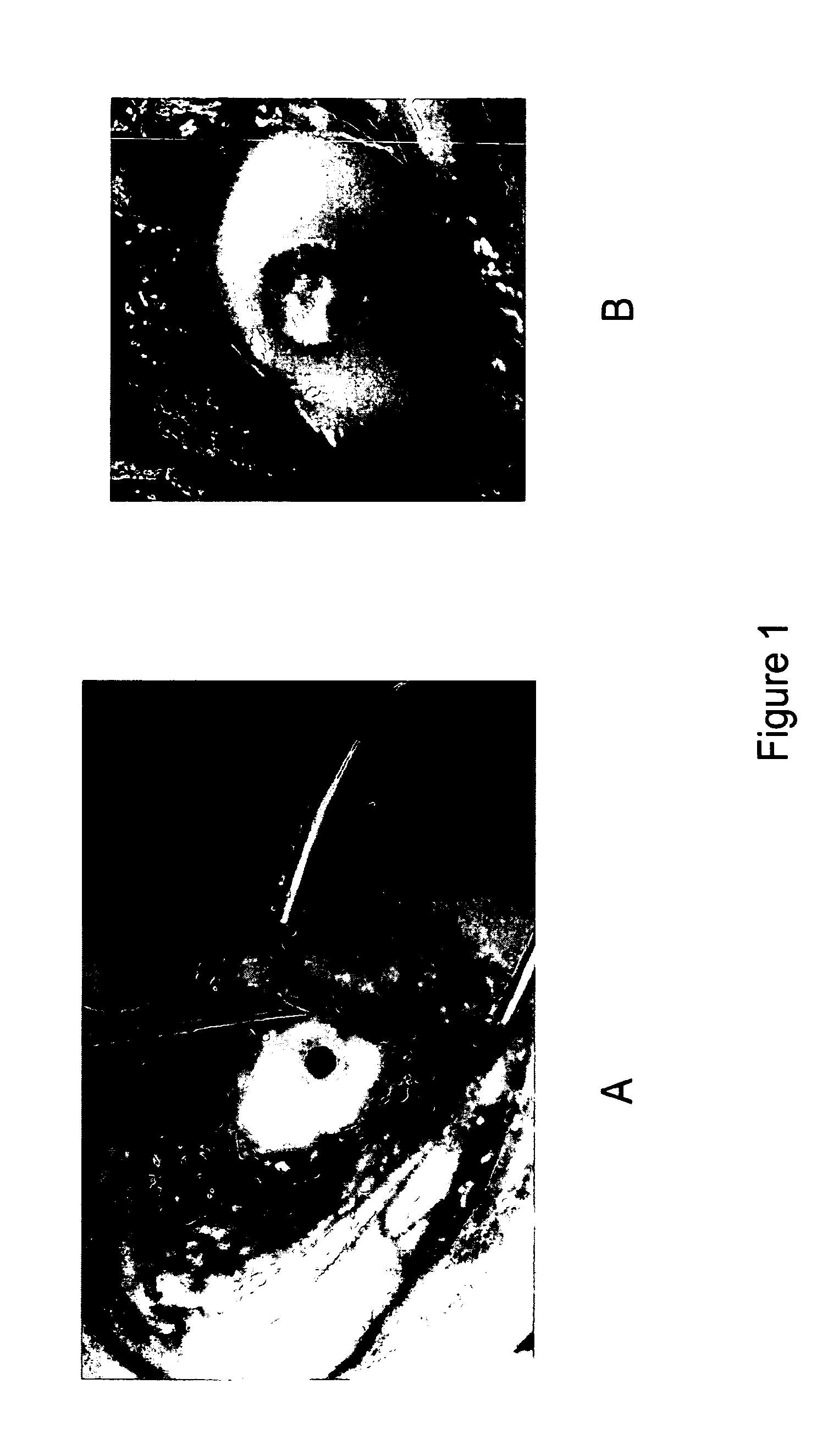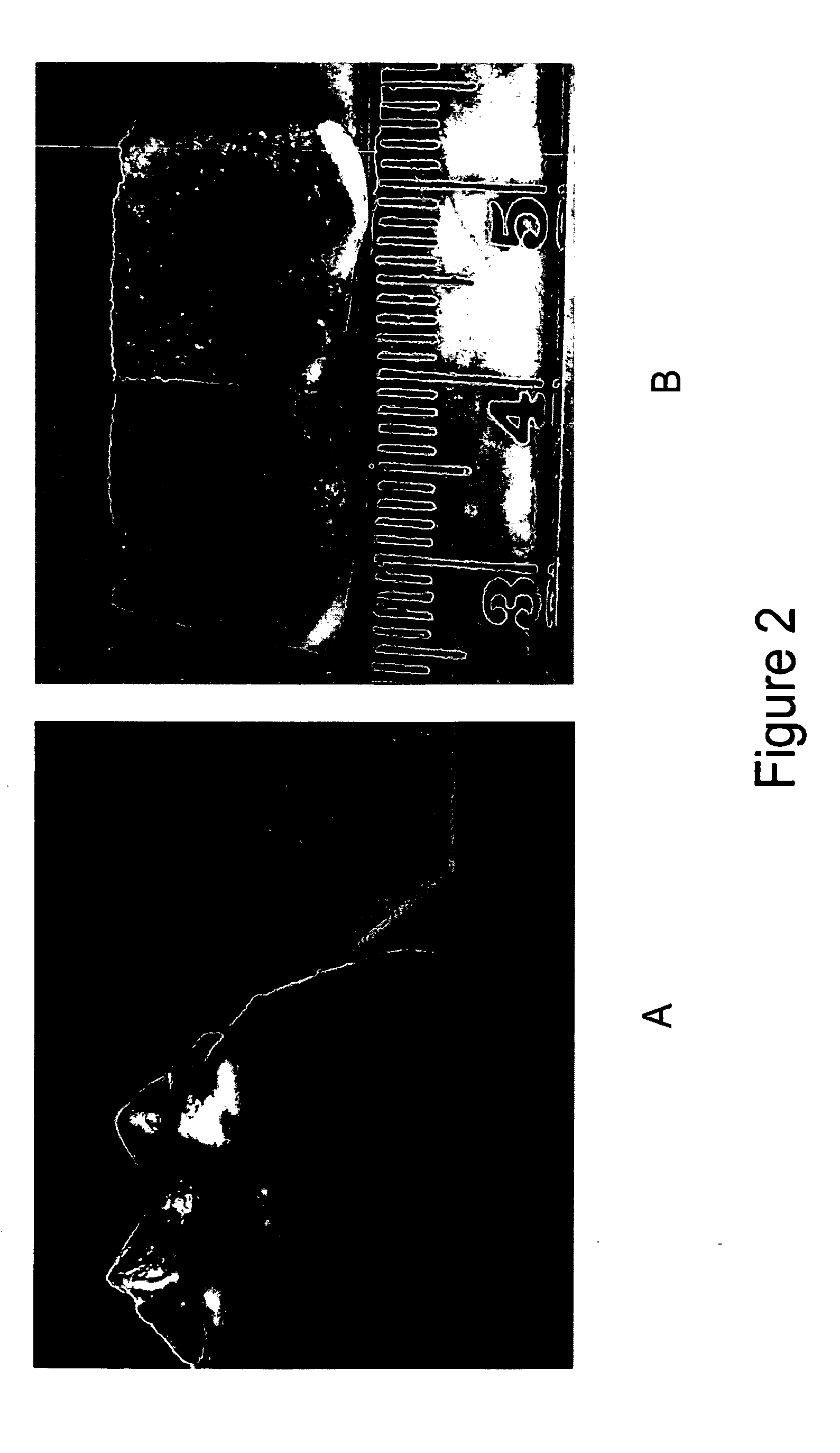Tissue Matrix System
- Summary
- Abstract
- Description
- Claims
- Application Information
AI Technical Summary
Benefits of technology
Problems solved by technology
Method used
Image
Examples
example 2
[0056]This example illustrates implant site preparation and post-implantation of a matrix in an animal model experimental system.
[0057]In this example, as shown in FIG. 1, a circular defect was created in the weight-bearing region of the medial femoral condyle of a skeletally mature sheep using a 5.5 mm diameter OATS-type punch to a depth of 6 mm in an animal model of an osteochondral defect (FIG. 1a). The defect was then flushed with sterile saline prior to insertion of a test matrix. An entangled polyester-polysaccharide matrix comprising PLA-PGA copolymer and hyaluronic acid as described in Example 1 was then press-fit into the defect using a blunt instrument. FIG. 1b shows the implant site post-implantation.
example 3
[0058]This example illustrates healing three months after the intervention illustrated in Example 2. FIG. 2 shows an example of gross outcome at 3 months. Gross image of the femoral condyle (FIG. 2a) and cross section of the tissue at the defect site (FIG. 2b) reveals new tissue formation fully integrated with the native cartilage and no evidence of inflammation at the site. FIG. 2b is a cross section of the implant site after decalcification showing extensive ingrowths and replacement of the implant with cartilage and bone. Animals having similar defects but not receiving an entangled polyester-polysaccharide matrix do not show the same extent of ingrowth of cartilage and bone.
example 4
[0059]This example illustrates histological analysis of the 3-month post-intervention tissue presented in Example 3, and demonstrates hyaline cartilage repair with active osteogenesis at the core of the implant. In this example, as shown in FIG. 3, the tissue was stained with Safranin-O to visualize the cartilage proteoglycans found in the native and newly formed cartilage. FIG. 3 indicates that new cartilage and bone at the site of intervention become recognizable histologically upon examination 3 months following the procedure. FIG. 3 further indicates that greater than 50% of the composite implant was degraded / resorbed by 3 months post-intervention and was replace by newly formed bone and cartilage. Dashed line shows the marking of the surgical defect.
Example 5
[0060]This example illustrates formation of cartilage and bone three months post-intervention. As shown in FIG. 4, light microscopy of an area close to the implant site reveals active formation of cartilage from undifferent...
PUM
| Property | Measurement | Unit |
|---|---|---|
| Weight ratio | aaaaa | aaaaa |
| Viscosity | aaaaa | aaaaa |
| Therapeutic | aaaaa | aaaaa |
Abstract
Description
Claims
Application Information
 Login to View More
Login to View More - R&D
- Intellectual Property
- Life Sciences
- Materials
- Tech Scout
- Unparalleled Data Quality
- Higher Quality Content
- 60% Fewer Hallucinations
Browse by: Latest US Patents, China's latest patents, Technical Efficacy Thesaurus, Application Domain, Technology Topic, Popular Technical Reports.
© 2025 PatSnap. All rights reserved.Legal|Privacy policy|Modern Slavery Act Transparency Statement|Sitemap|About US| Contact US: help@patsnap.com



